Multi-Objective Optimization via GA Based on Micro Laser Line Scanning Data for Micro-Scale Surface Modeling
Abstract
:1. Introduction
2. Materials and Methods
2.1. Multi-Objective Optimization for Micro-Scale Free-Form Surface Modeling
2.2. Micro-Scale Flat Surface Modeling via Multi-Objective Optimization
2.3. Surface Contouring at Micro-Scale via Micro Laser Line Scanning
3. Results of Micro-Scale Flat and Free-Form Surface Modeling
4. Discussion
5. Conclusions
Funding
Conflicts of Interest
References
- Ghosh, A.K.; Ullah, A.S.; Kubo, A.; Akamatsu, T.; D’Addona, D.M. Machining phenomenon twin construction for Industry 4.0: A Case of Surface Roughness. J. Manuf. Mater. Process. 2020, 4, 11. [Google Scholar] [CrossRef]
- Villalonga, A.; Beruvides, G.; Castaño, F.; Haber, R.E. Cloud-Based Industrial Cyber–physical system for data-driven reasoning: A review and use case on an Industry 4.0 Pilot Line. IEEE Trans. Ind. Inform. 2020, 16, 5975–5984. [Google Scholar] [CrossRef]
- Gan, B.; Zhang, C.; Chen, Y.; Chen, Y.C. Research on role modeling and behavior control of virtual reality animation interactive system in Internet of Things. J. Real-Time Image Process. 2021, 18, 1069–1083. [Google Scholar] [CrossRef]
- Nasr, M.M.; Anwar, S.; Al-Samhan, A.M.; Ghaleb, M.; Dabwan, A. Milling of graphene reinforced Ti6Al4V nanocomposites: An artificial intelligence based industry 4.0 approach. Materials 2020, 13, 5707. [Google Scholar] [CrossRef] [PubMed]
- Majstorovic, V.; Stojadinovic, S.; Zivkovic, S.; Djurdjanovic, D.; Jakovljevic, Z.; Gligorijevic, N. Cyber-physical manufacturing metrology model (CPM3) for sculptured surfaces–turbine blade application. Procedia CIRP 2017, 63, 658–663. [Google Scholar] [CrossRef]
- Elhoone, H.; Zhang, T.; Anwar, M.; Desai, S. Cyber-based design for additive manufacturing using artificial neural networks for Industry 4.0. Int. J. Prod. Res. 2020, 58, 2841–2861. [Google Scholar] [CrossRef]
- Czimmermann, T.; Chiurazzi, M.; Milazzo, M.; Roccella, S.; Barbieri, M.; Dario, P. An autonomous robotic platform for manipulation and inspection of metallic Surfaces in Industry 4.0. IEEE Trans. Autom. Sci. Eng. 2022, 19, 1691–1706. [Google Scholar] [CrossRef]
- Mishra, D.; Roy, R.B.; Dutta, S.; Pal, S.K.; Chakravarty, D. A review on sensor based monitoring and control of friction stir welding process and a roadmap to Industry 4.0. J. Manuf. Process. 2018, 36, 373–397. [Google Scholar] [CrossRef]
- Yan, J.; Meng, Y.; Lu, L.; Li, L. Industrial big data in an Industry 4.0 environment: Challenges, schemes, and applications for predictive maintenance. IEEE Access 2017, 5, 23484–23491. [Google Scholar] [CrossRef]
- Nadolny, K.; Kapłonek, W. Analysis of flatness deviations for austenitic stainless steel work pieces after efficient surface machining. Meas. Sci. Rev. 2014, 14, 204–212. [Google Scholar] [CrossRef] [Green Version]
- Fei, W.; Narsilio, G.A.; Disfani, M.M. Impact of three-dimensional sphericity and roundness on heat transfer in granular materials. Powder Technol. 2019, 355, 770–781. [Google Scholar] [CrossRef]
- Zheng, Y. A simple unified branch-and-bound algorithm for minimum zone circularity and sphericity errors. Meas. Sci. Technol. 2020, 31, 045005. [Google Scholar] [CrossRef]
- Lei, L.; Xie, Z.; Zhu, H.; Guan, Y.; Kong, M.; Zhang, B.; Fu, Y. Improved particle swarm optimization algorithm based on a three–dimensional convex hull for fitting a screw thread central axis. IEEE Access 2021, 9, 4902–4910. [Google Scholar] [CrossRef]
- Brad, E.; Brad, S. Algorithm for designing reconfigurable equipment to enable Industry 4.0 and circular economy-driven manufacturing systems. Appl. Sci. 2021, 11, 4446. [Google Scholar] [CrossRef]
- Ding, Y.; Zhang, W.; Yu, L.; Lu, K. The accuracy and efficiency of GA and PSO optimization schemes on estimating reaction kinetic parameters of biomass pyrolysis. Energy 2019, 176, 582–588. [Google Scholar] [CrossRef]
- Lodewijks, G.; Cao, Y.; Zhao, N.; Zhang, H. Reducing CO2 emissions of an airport baggage handling transport system using a particle swarm optimization algorithm. IEEE Access 2021, 9, 121894–121905. [Google Scholar] [CrossRef]
- Saini, D.; Kumar, S.; Singh, M.K.; Ali, M. Two view NURBS reconstruction based on GACO model. Complex Intell. Syst. 2021, 7, 2329–2346. [Google Scholar] [CrossRef]
- Tran, N.-H.; Park, H.S.; Nguyen, Q.V.; Hoang, T.D. Development of a smart cyber-physical manufacturing system in the Industry 4.0 Context. Appl. Sci. 2019, 9, 3325. [Google Scholar] [CrossRef]
- Soori, M.; Asmael, M. A review of the recent development in machining parameter optimization. Jordan J. Mech. Ind. Eng. 2022, 16, 205–223. [Google Scholar]
- Ye, X.; Luo, L.; Hou, L.; Duan, Y.; Wu, Y. Laser ablation manipulator coverage path planning method based on an improved ant colony algorithm. Appl. Sci. 2020, 10, 8641. [Google Scholar] [CrossRef]
- Pathak, V.K.; Nayak, C.; Singh, R.; Dikshit, M.K.; Sai, T. Optimizing parameters in surface reconstruction of transtibial prosthetic socket using central composite design coupled with fuzzy logic-based model. Neural Comput. Appl. 2020, 32, 15597–15613. [Google Scholar] [CrossRef]
- Kannan, K.; Arunachalam, N.; Chawla, A.; Natarajan, S. Multi-sensor data analytics for grinding wheel redress life estimation- an approach towards Industry 4.0. Procedia Manuf. 2018, 26, 1230–1241. [Google Scholar] [CrossRef]
- Florková, Z.; Jambor, M. Quantification of aggregate surface texture based on three dimensional microscope measurement. Procedia Eng. 2017, 192, 195–200. [Google Scholar] [CrossRef]
- Bustillo, A.; Pimenov Yu, D.; Mia, M.; Kapłonek, W. Machine-learning for automatic prediction of flatness deviation considering the wear of the face mill teeth. J. Intell. Manuf. 2021, 32, 895–912. [Google Scholar] [CrossRef]
- Melentiev, R.; Fang, F. Tailoring of surface topography for tribological purposes by controlled solid particle impacts. Wear 2020, 444–445, 203164. [Google Scholar] [CrossRef]
- Haitjema, H. Straightness, flatness and cylindricity characterization using discrete Legendre polynomials. CIRP Ann.-Manuf. Technol. 2020, 69, 457–460. [Google Scholar] [CrossRef]
- Vidal, M.; Ostra, M.; Imaz, N. García-Lecina, E.; Ubide, C. Feature descriptors from scanned images of chromium electrodeposits as predictor parameters of surface roughness and crystallographic texture. Chemom. Intell. Lab. Syst. 2015, 149, 90–98. [Google Scholar] [CrossRef]
- Shaukat, N.; Ahmad, A.; Mohsin, B.; Khan, R.; Ud-Din Khan, S.; Ud-Din Khan, S. Multi objective core reloading pattern optimization of PARR-1 using modified genetic algorithm coupled with Monte Carlo methods. Sci. Technol. Nucl. Install. 2021, 2021, 1802492. [Google Scholar] [CrossRef]
- Melin, P.; Sánchez, D. Multi-objective optimization for modular granular neural networks applied to pattern recognition. Inf. Sci. 2018, 460–461, 594–610. [Google Scholar] [CrossRef]
- Akleman, E.; Srinivasan, V.; Chen, J. Interactive modeling of smooth manifold meshes with arbitrary topology: G1 stitched bi-cubic Bézier patches. Comput. Graph. 2017, 66, 64–73. [Google Scholar] [CrossRef]
- Long, Q.; Wu, C.; Wang, X.; Huang, T.; Wang, X. A genetic algorithm for unconstrained multi-objective optimization. Swarm Evol. Comput. 2015, 22, 1–14. [Google Scholar] [CrossRef]
- Jia, L.; Cheng, D.; Chiu, M.S. Pareto-optimal solutions based multi-objective particle swarm optimization control for batch processes. Neural Comput. Appl. 2012, 21, 1107–1116. [Google Scholar] [CrossRef]
- Hazra, J.; Sinha, A.K. Congestion Management Using Multiobjective Particle Swarm Optimization. IEEE Trans. Power Syst. 2007, 22, 1726–1734. [Google Scholar] [CrossRef]
- Tan, K.C.; Chiam, S.C.; Mamun, A.A.; Goh, C.K. Balancing exploration and exploitation with adaptive variation for evolutionary multi–objective optimization. Eur. J. Oper. Res. 2009, 197, 701–713. [Google Scholar] [CrossRef]
- Li, C.Y.; Zhu, C.G. G1 continuity of four pieces of developable surfaces with Bézier boundaries. J. Comput. Appl. Math. 2018, 329, 164–172. [Google Scholar] [CrossRef]
- Tao, P.; Sun, Z.; Sun, Z. An improved intrusion detection algorithm based on GA and SVM. IEEE Access 2018, 6, 13624–13631. [Google Scholar] [CrossRef]
- Muñoz-Rodríguez, J.A. Micro-scale spherical and cylindrical surface modeling via metaheuristic algorithms and micro laser line projection. Algorithms 2022, 15, 145. [Google Scholar] [CrossRef]
- Muñoz-Rodríguez, J.A.; Rodríguez-Vera, R. Evaluation of the light line displacement location for object shape detection. J. Mod. Opt. 2003, 50, 137–154. [Google Scholar] [CrossRef]
- Yu, H.; Huang, Q.; Zhao, J. Fabrication of an optical fiber micro-sphere with a diameter of several tens of micrometers. Materials 2014, 7, 4878–4895. [Google Scholar] [CrossRef]
- Lin, T.W.; Wang, C.H. A hybrid genetic algorithm to minimize the periodic preventive maintenance cost in a series-parallel system. J. Intell. Manuf. 2012, 23, 1225–1236. [Google Scholar] [CrossRef]
- Gibbs, M.S.; Maier, H.R.; Dandy, G.C. Relationship between problem characteristics and the optimal number of genetic algorithm generations. Eng. Optim. 2011, 43, 349–376. [Google Scholar] [CrossRef]
- Cheng, X. Algorithm of CAD surface generation for complex pipe model in Industry 4.0 background. Comput. Intell. Neurosci. 2022, 2022, 7062052. [Google Scholar] [CrossRef] [PubMed]
- Kovács, Z.F.; Viharos, Z.J.; Kodácsy, J. Surface flatness and roughness evolution after magnetic assisted ball burnishing of magnetizable and non-magnetizable materials. Measurement 2020, 158, 107750. [Google Scholar] [CrossRef]
- Rena, M.J.; Suna, L.J.; Liub, M.Y.; Cheungb, C.F.; Yina, Y.H.; Cao, Y.L. A weighted least square based data fusion method for precision measurement of freeform surfaces. Precis. Eng. 2017, 48, 144–151. [Google Scholar] [CrossRef]
- Miko, B. Assessment of flatness error by regression analysis. Measurement 2021, 171, 108720. [Google Scholar] [CrossRef]
- Mikó, B.; Varga, B.; Zębala, W. The effect of the feed direction on the micro- and macro accuracy of 3D ball-end milling of chromium-molybdenum Alloy Steel. Materials 2019, 12, 4038. [Google Scholar] [CrossRef]
- Ye, L.; Qian, J.; Haitjema, H.; Reynaerts, D. On-machine chromatic confocal measurement for micro-EDM drilling and milling. Precis. Eng. 2022, 76, 110–123. [Google Scholar] [CrossRef]
- Zhu, D.; Feng, X.; Xu, X.; Yang, Z.; Li, W.; Yan, S.; Ding, H. Robotic grinding of complex components: A step towards efficient and intelligent machining–challenges, solutions, and applications. Robot. Comput.-Integr. Manuf. 2020, 65, 101908. [Google Scholar] [CrossRef]
- Fang, H.; Zhu, H.; Yang, J.; Huang, X.; Hu, X. Three-dimensional angularity characterization of coarse aggregates based on experimental comparison of selected methods. Part. Sci. Technol. 2021, 1, 1–9. [Google Scholar] [CrossRef]
- Chen, L.C. Automatic 3D surface reconstruction and sphericity measurement of micro spherical balls of miniaturized coordinate measuring probes. Meas. Sci. Technol. 2007, 18, 1748–1755. [Google Scholar] [CrossRef]
- Stojadinovic, S.M.; Majstorovic, V.D.; Gąska, A.; Sładek, J.; Durakbasa, N.M. Development of a coordinate measuring machine—based inspection Planning system for industry 4.0. Appl. Sci. 2021, 11, 8411. [Google Scholar] [CrossRef]
- Shu, H.; Zou, C.; Chen, J.; Wang, S. Research on micro/nano surface flatness evaluation method based on improved particle swarm optimization algorithm. Front. Bioeng. Biotechnol. 2021, 9, 775455. [Google Scholar] [CrossRef]
- Yang, Y.; Dong, Z.; Meng, Y.; Shao, C. Data-driven intelligent 3D surface measurement in smart manufacturing: Review and outlook. Machine 2021, 9, 13. [Google Scholar] [CrossRef]
- Liang, Z.; Liu, X.; Ye, B.; Wang, Y. Performance investigation of fitting algorithms in surface micro-topography grinding processes based on multi-dimensional fuzzy relation set. Int. J. Adv. Manuf. Technol. 2013, 67, 2779–2798. [Google Scholar] [CrossRef]
- Tian, X.; Kong, L.; Kong, D.; Yuan, L.; Kong, D. An improved method for NURBS surface based on particle swarm optimization BP neural network. IEEE Access 2020, 8, 184656–184663. [Google Scholar] [CrossRef]
- Wu, Z.; Wang, X.; Fu, Y.; Shen, J.; Jiang, Q.; Zhu, Y.; Zhou, M. Fitting scattered data points with ball B-Spline curves using particle swarm optimization. Comput. Graph. 2018, 72, 1–11. [Google Scholar] [CrossRef]
- Tsiptsis, I.N.; Liimatainen, L.; Kotnik, T.; Niiranen, J. Structural optimization employing isogeometric tools in Particle Swarm Optimizer. J. Build. Eng. 2019, 24, 100761. [Google Scholar] [CrossRef]
- Wang, S.; Xia, Y.; Wang, R.; You, L.; Zhang, J. Optimal NURBS conversion of PDE surface-represented high-speed train heads. Optim. Eng. 2019, 20, 907–928. [Google Scholar] [CrossRef] [Green Version]


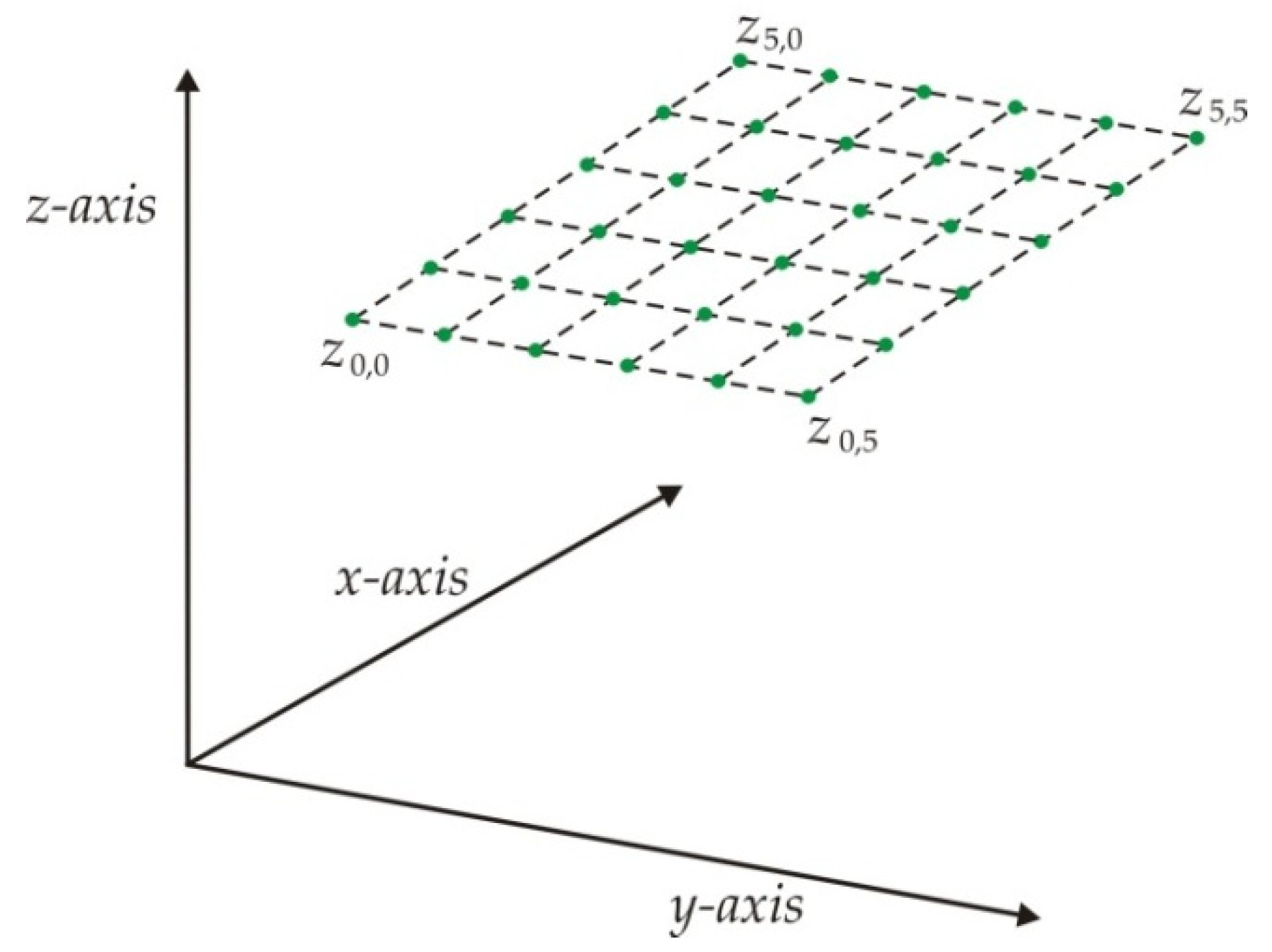
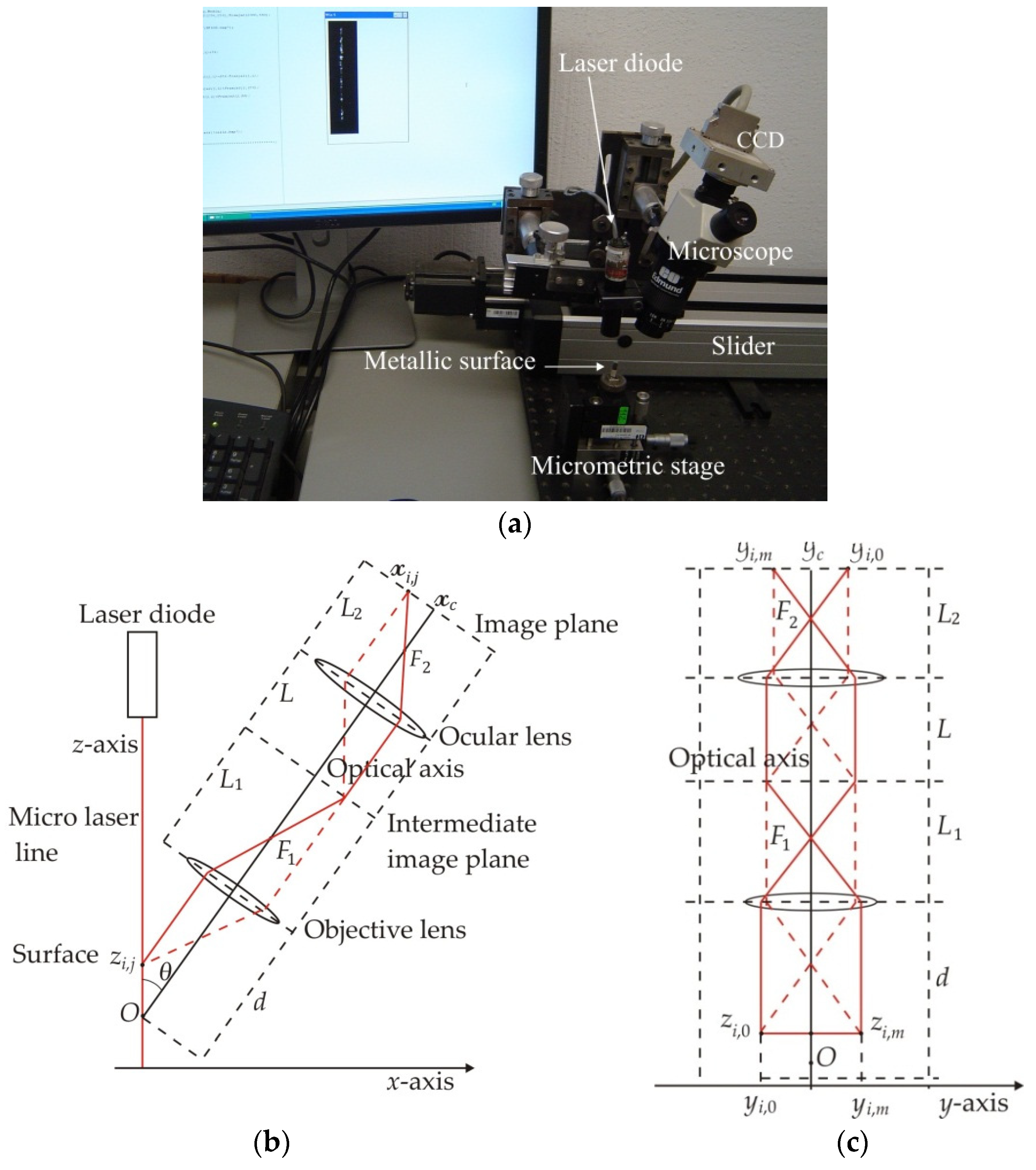
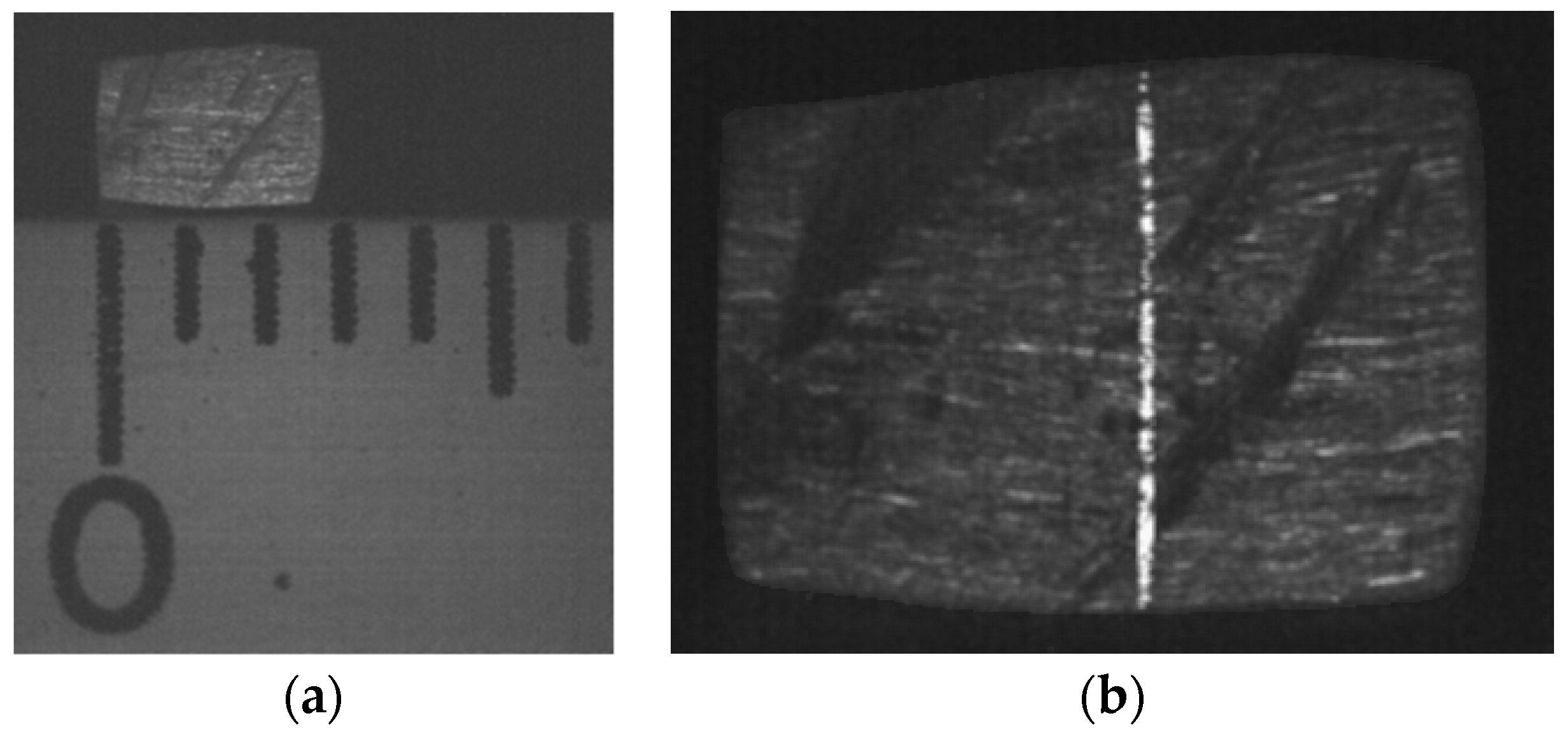
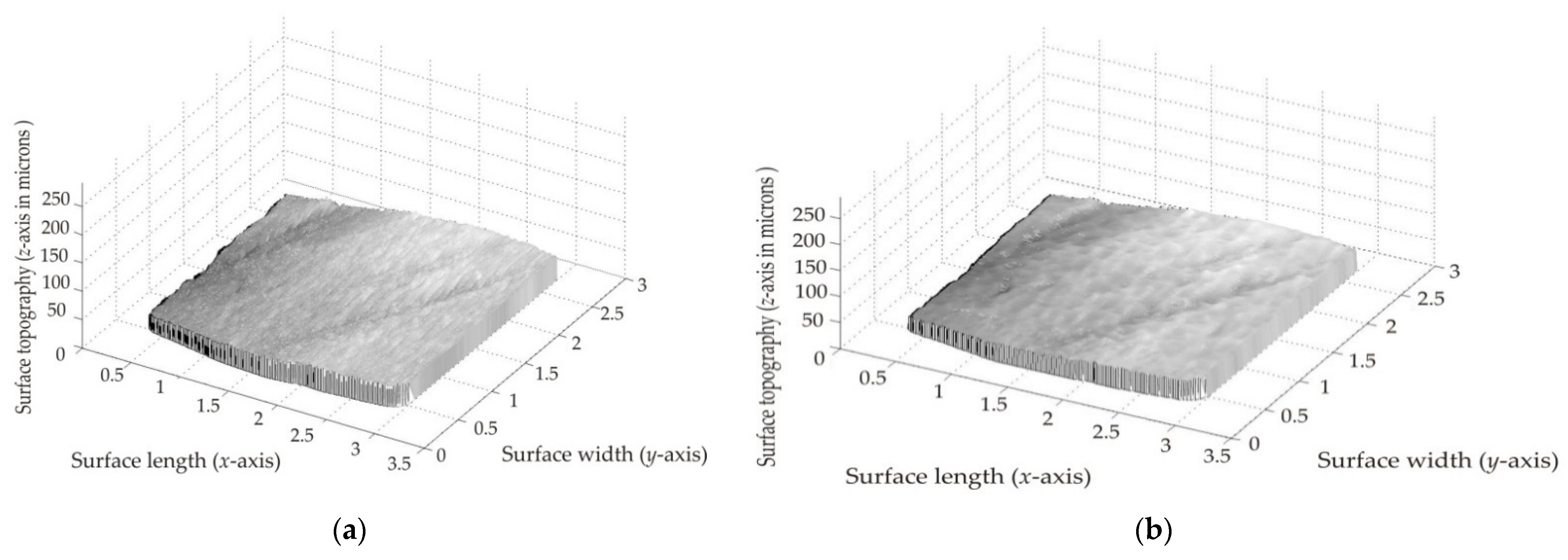
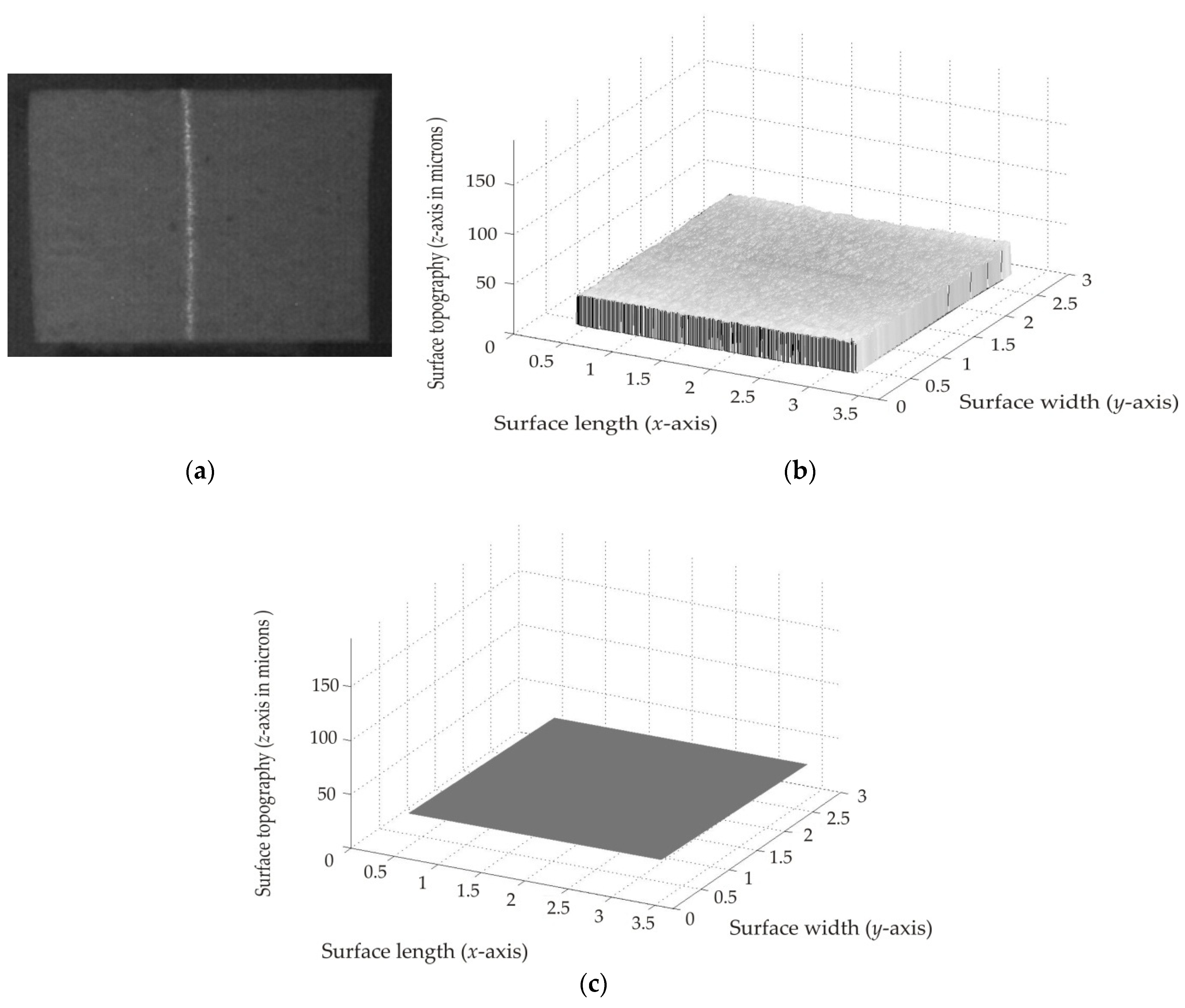
| Pi,j | k | 1 | 2 | 3 | 4 | C1 | C2 | C3 | C4 | C5 | C6 | C7 | C8 | |
|---|---|---|---|---|---|---|---|---|---|---|---|---|---|---|
| P1,0 | 1 | 4.781 | 4.766 | 4.375 | 4.740 | 4.668 | 4.768 | 4.775 | 4.733 | 4.364 | 4.451 | 4.672 | 4.199 | |
| P2,0 | 1 | 4.329 | 4.645 | 4.238 | 4.064 | 4.254 | 4.456 | 4.527 | 4.605 | 4.063 | 4.071 | 4.153 | 4.216 | |
| P0,1 | 1 | 4.753 | 4.144 | 4.550 | 4.698 | 4.131 | 4.175 | 4.514 | 4.737 | 4.458 | 4.623 | 4.695 | 4.501 | |
| P1,1 | 1 | 4.396 | 4.643 | 4.771 | 4.394 | 4.266 | 4.479 | 4.636 | 4.601 | 4.265 | 4.428 | 4.755 | 4.716 | |
| P2,1 | 1 | 4.163 | 4.487 | 4.549 | 4.533 | 4.162 | 4.184 | 4.486 | 4.419 | 4.382 | 4.537 | 4.546 | 4.468 | |
| P0,2 | 1 | 4.724 | 4.117 | 4.736 | 4.094 | 4.085 | 4.375 | 4.439 | 4.660 | 4.092 | 4.097 | 4.570 | 4.663 | |
| P1,2 | 1 | 4.318 | 4.543 | 4.657 | 4.484 | 4.215 | 4.382 | 4.450 | 4.514 | 4.457 | 4.512 | 4.643 | 4.633 | |
| P2,2 | 1 | 4.346 | 4.118 | 4.525 | 4.508 | 4.084 | 4.210 | 4.311 | 4.259 | 4.433 | 4.509 | 4.519 | 4.449 | |
| fitness | 0.258 | 0.179 | 0.193 | 0.166 | 0.106 | 0.188 | 0.256 | 0.269 | 0.085 | 0.130 | 0.222 | 0.159 | ||
| P1,0 | 2 | 4.766 | 4.668 | 4.740 | 4.364 | 4.380 | 4.670 | 4.748 | 4.754 | 4.221 | 4.447 | 4.625 | 4.685 | 4.135 |
| P2,0 | 2 | 4.645 | 4.254 | 4.064 | 4.063 | 4.234 | 4.320 | 4.535 | 4.569 | 4.058 | 4.063 | 4.064 | 3.880 | 4.074 |
| P0,1 | 2 | 4.144 | 4.131 | 4.698 | 4.458 | 4.104 | 4.133 | 4.143 | 3.803 | 4.303 | 4.459 | 4.587 | 4.683 | 4.154 |
| P1,1 | 2 | 4.643 | 4.266 | 4.394 | 4.265 | 4.186 | 4.440 | 4.464 | 4.605 | 4.184 | 4.327 | 4.371 | 4.283 | 4.195 |
| P2,1 | 2 | 4.487 | 4.162 | 4.533 | 4.382 | 4.130 | 4.314 | 4.454 | 4.348 | 4.359 | 4.420 | 4.481 | 4.473 | 3.992 |
| P0,2 | 2 | 4.117 | 4.085 | 4.094 | 4.092 | 4.067 | 4.096 | 4.114 | 4.001 | 4.073 | 4.092 | 4.093 | 3.786 | 4.112 |
| P1,2 | 2 | 4.059 | 4.215 | 4.484 | 4.457 | 4.028 | 4.071 | 4.178 | 3.935 | 4.395 | 4.457 | 4.481 | 4.421 | 4.163 |
| P2,2 | 2 | 4.118 | 4.084 | 4.507 | 4.433 | 3.998 | 4.088 | 4.115 | 3.900 | 4.232 | 4.452 | 4.487 | 4.432 | 3.981 |
| fitness | 0.179 | 0.106 | 0.166 | 0.085 | 0.062 | 0.120 | 0.155 | 0.155 | 0.054 | 0.097 | 0.140 | 0.112 | 0.0126 |
Publisher’s Note: MDPI stays neutral with regard to jurisdictional claims in published maps and institutional affiliations. |
© 2022 by the author. Licensee MDPI, Basel, Switzerland. This article is an open access article distributed under the terms and conditions of the Creative Commons Attribution (CC BY) license (https://creativecommons.org/licenses/by/4.0/).
Share and Cite
Rodríguez, J.A.M. Multi-Objective Optimization via GA Based on Micro Laser Line Scanning Data for Micro-Scale Surface Modeling. Energies 2022, 15, 6571. https://doi.org/10.3390/en15186571
Rodríguez JAM. Multi-Objective Optimization via GA Based on Micro Laser Line Scanning Data for Micro-Scale Surface Modeling. Energies. 2022; 15(18):6571. https://doi.org/10.3390/en15186571
Chicago/Turabian StyleRodríguez, J. Apolinar Muñoz. 2022. "Multi-Objective Optimization via GA Based on Micro Laser Line Scanning Data for Micro-Scale Surface Modeling" Energies 15, no. 18: 6571. https://doi.org/10.3390/en15186571
APA StyleRodríguez, J. A. M. (2022). Multi-Objective Optimization via GA Based on Micro Laser Line Scanning Data for Micro-Scale Surface Modeling. Energies, 15(18), 6571. https://doi.org/10.3390/en15186571




